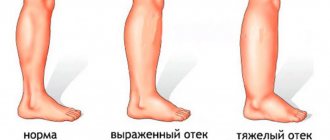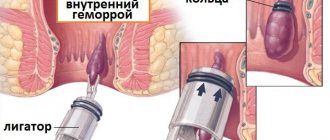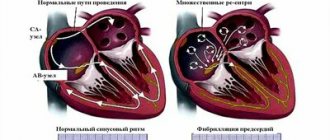November 30, 2021
One of the main reasons for the spread of rotaviruses is non-compliance with personal hygiene rules, when transmission of infection occurs through hands, which in turn contaminate dishes, toys, and linen
The pathogen is transmitted through dirty hands, that is, the transmission mechanism is fecal-oral, although airborne droplets are also possible. It can affect people at any age, and the causative agent of rotavirus gastroenteritis is a virus from the order Rotavirus, family Reoviridae. Routes of transmission: contact and household (through dirty hands and household items); aqueous (when drinking water infected with viruses, including bottled water); nutritional (most often when consuming milk and dairy products).
The possibility of airborne transmission of rotavirus infection cannot be ruled out. But one of the main reasons for the spread of rotaviruses is non-compliance with personal hygiene rules, when transmission of the infection occurs through hands, which in turn contaminate dishes, toys, and linen.
The carrier of the infection is a sick person or a healthy virus carrier. The virus multiplies in the cells of the mucous membrane of the gastrointestinal tract and is excreted in the feces for up to 3 weeks (usually 7-8 days from the first symptoms of the disease). Damage to the mucous membrane of the digestive tract disrupts the digestion of food and leads to the development of severe diarrhea and dehydration. The main mechanism of transmission of rotavirus infection is through food. Infection occurs through the fecal-oral route.
What is diarrhea?
The main sign that we are not talking about episodic diarrhea, but about a full-fledged disorder, is the daily frequency of stool. Diarrhea is loose stool that occurs in paroxysms: three times a day or more often. At the same time, the water content in feces, normally 50-80%, increases to 95%1.
Diarrhea can be acute or chronic.
Acute form
(up to 14 days) may appear as a result of poisoning, eating allergenic foods2, intolerance to certain foods, medications, or the entry of certain viruses and bacteria into the body2.
Chronic
(from a month or more) - as a result of taking antibiotics, laxatives. The cause may also be certain diseases of the gastrointestinal tract2.
The second most important sign is the condition of the stool. Color, consistency and the presence of impurities may indicate various diseases. For example, watery and loose stools, as well as a greenish tint to the stool, indicate the development of an intestinal infection. The cause of loose stools that are light in color and clayey in appearance may be damage to the small intestine and its initial sections.
Diarrhea
Vomit
Gastritis
Pancreatitis
Jaundice
Diabetes
30288 07 June
IMPORTANT!
The information in this section cannot be used for self-diagnosis and self-treatment.
In case of pain or other exacerbation of the disease, diagnostic tests should be prescribed only by the attending physician. To make a diagnosis and properly prescribe treatment, you should contact your doctor. Diarrhea: causes of occurrence, what diseases it occurs with, diagnosis and treatment methods.
Definition
Diarrhea is defined as loose or loose stools three or more times a day, producing more than 200 ml of liquid stool. However, frequent stools are not considered diarrhea. Unformed, loose stools in newborns and breastfed children are also normal.
Diarrhea, or diarrhea, occurs due to impaired absorption of water in the intestines. Significant loss of fluid can lead to dehydration, and the removal of large amounts of electrolytes (potassium, sodium, chlorine ions) can disrupt the normal course of intra- and intercellular processes. According to the World Health Organization, acute diarrhea causes more than 2 million deaths per year.
Types of diarrhea
According to the clinical course:
- acute diarrhea - lasts up to 4 weeks, caused by bacterial, parasitic or viral infectious diseases of the intestine;
- chronic diarrhea - lasts more than 4 weeks, and its cause is pathological conditions of the gastrointestinal tract.
Separately, there is “travelers' diarrhea” - a clinical syndrome that develops in people traveling to other countries and climatic zones.
It usually lasts no more than 7 days. By pathogenesis:
- secretory diarrhea (profuse watery stool more than 1 l/day);
- osmolar diarrhea (copious stool (polyfecal matter) with a large amount of semi-digested food residue (steatorrhea));
- hyper- and hypokinetic diarrhea (liquid or mushy stool);
- exudative diarrhea (loose, loose stools with mucus and/or blood).
Possible causes of diarrhea
Diarrhea can be caused by food poisoning, eating stale or incompatible foods, alcohol, too much coffee, too fatty or spicy foods.
Diarrhea is usually a symptom of an infection in the gastrointestinal tract, which can be caused by a variety of bacteria, viruses and parasites. The infection spreads through contaminated food, drinking water or from person to person as a result of poor hygiene. The patient experiences symptoms of intoxication: fever, chills, body aches, general malaise, lack of appetite, nausea, vomiting. High fever is more characteristic of invasive infections that cause an inflammatory response. With severe inflammation in the intestines, erosions and ulcers develop and, as a result, bloody diarrhea.
In addition, diarrhea can be caused by various diseases and pathological conditions:
- lack of pancreatic enzymes, chronic pancreatitis;
- neoplasms of the pancreas, adrenal glands or intestines;
- ischemia of the small and large intestine;
- irritable bowel syndrome;
- intestinal dysbiosis;
- resection of the stomach or intestine with the formation of a blind loop or short small intestine;
- congenital disorders of the absorption process;
- obstructive jaundice of any nature;
- diseases of the thyroid gland (hyperthyroidism, thyrotoxicosis);
- diabetes;
- radiation exposure;
- taking certain medications (laxatives, antibiotics, antacids, etc.);
- neurogenic disorders.
Diarrhea is often included in the symptom complex of the following syndromes:
- syndromes of acute gastritis and rhitis are characteristic of salmonellosis, bacterial food poisoning, intestinal yersiniosis (pseudotuberculosis);
- acute enteritis syndrome is typical for cholera, viral diarrhea, coli infection caused by Escherichia coli, intestinal yersiniosis;
- acute colitis syndrome develops with dysentery, coli infection, amebiasis (amebic dysentery);
- acute rocolitis syndrome is characteristic of salmonellosis, intestinal yersiniosis, campylobacteriosis;
- profuse diarrhea with a significant admixture of blood may indicate the onset of the development of ulcerative colitis, Crohn's disease;
- acute infectious diseases of viral etiology (rotavirus, norovirus, adenovirus, coronavirus) occur with symptoms of intoxication and primary damage to several parts of the gastrointestinal tract (stomach, small and large intestine) and with the development of enterocolitis and rocolitis syndromes.
Involvement of the stomach and small intestine in the pathological process may be accompanied by severe dehydration and electrolyte disturbances due to fluid loss.
During diarrhea, water and electrolytes (sodium, chlorine, potassium and bicarbonate) are eliminated from the body through loose stools, vomit, sweat and urine. Chronic diarrhea often causes vitamin and mineral deficiencies, which can lead to the development of anemia. Diarrhea in a child is especially dangerous, as it is fraught with very rapid development of dehydration, tachycardia, drop in blood pressure and shock.
Which doctors should you contact if you have diarrhea
? If you have diarrhea, you should contact your general practitioner or. The doctor will prescribe the necessary examination and determine the cause of the disease. Often, consultation with an infectious disease specialist is required to make a correct diagnosis.
Diagnostics and examinations for diarrhea
The diagnostic algorithm for acute diarrhea involves determining its cause, identifying an inflammatory or other etiological factor, and verifying the disease.
Diagnostic difficulties rarely arise only when diarrhea becomes the first manifestation of a systemic disease or dominates the clinical picture.
Along with a physical examination (measuring weight, temperature, heart rate and blood pressure), a proctological examination is performed.
The nature of the stool is determined by the location of the intestinal lesion (small or large intestine). Depending on the color and consistency of the stool, the cause of diarrhea can be assumed:
- Yellow diarrhea - occurs as a result of increased intestinal peristalsis (stool moves quickly and is not fully formed), may be accompanied by pain and heaviness in the abdomen.
- Liquid green stool is recorded in viral and bacterial infectious diseases. The color of stool is explained by the active increase in the number of pathogens and the accumulation of leukocytes. May be accompanied by frequent vomiting and abdominal pain.
- Diarrhea with blood occurs due to gastrointestinal bleeding. If the upper parts of the digestive system are affected, the stool turns black. Stool with scarlet blood indicates bleeding from the rectum.
- White, loose stools occur when there are tumors or stones in the body that compress the bile duct. This condition is also accompanied by darkening of the urine and yellowing of the skin.
- Water diarrhea occurs in cholera. In this case, bowel movements are very frequent, and there is a high risk of rapid dehydration.
Laboratory examination methods:
- ;
- ;
- general urine analysis;
Causes of loose stools
Episodes of loose stools that plague a person for one or several days are not a separate disease. This is just one symptom of functional, organic or neural dysfunction. Loose stools that persist for a long time may be accompanied by other clinical manifestations: abdominal pain and cramps, fever, chills, nausea, vomiting, dizziness. It is on the basis of a set of symptoms that one can most accurately determine the cause of loose stools.
The most common causes of diarrhea in adults are3:
- food allergies;
- lactose intolerance (almost instantaneous reaction to milk);
- intestinal infection;
- viral or bacterial infection;
- neurogenic factor (stress, neurotic disorders, emotional breakdowns).
Loose stools may also indicate pathologies of other organs, such as4:
- cystic fibrosis (a hereditary disease that affects a number of organs, from the liver to the gonads);
- pancreatitis (a group of diseases associated with inflammation of the pancreas);
- gastritis with secretion deficiency;
- oncological diseases;
- adrenal insufficiency;
- diabetes;
- hyperthyroidism (a syndrome caused by increased hormonal activity of the thyroid gland);
- cirrhosis of the liver;
- hepatitis;
- metabolic kidney diseases;
- hypovitaminosis (metabolic diarrhea).
Symptoms of rotovirus
Rotavirus or intestinal flu is highly contagious and spreads quickly in confined spaces. If one family member becomes ill, then with a high degree of probability the infection will be transmitted to everyone. Most often, patients complain of dizziness, nausea, weakness, chills, vomiting and diarrhea.
One of the leading symptoms of rotavirus infection is sudden onset of diarrhea.
During the course of the disease, there is an incubation period lasting up to 5 days, an acute period lasting 3–7 days, and a recovery period (4–5 days).
The onset of the disease is always sudden and is characterized by a sharp increase in temperature, as well as repeated increasing vomiting, cramping pain and rumbling in the abdomen, and the development of diarrhea is possible. The nature of the stool helps diagnose rotavirus infection. On the first day of illness, the stool is liquid yellow in color; in subsequent days, the stool becomes gray-yellow with a clay-like consistency. In addition to intestinal manifestations of the disease, patients are bothered by a runny nose, sore and sore throat, and cough.
The frequency of bowel movements often corresponds to the severity of the disease. If you have large, loose stools, dehydration may develop. From the very beginning of the disease, abdominal pain may be observed. More often they are moderate, constant, localized in the upper half of the abdomen; in some cases - cramping, strong. Signs of damage to the digestive organs persist for 3–6 days.
Treatment of loose stools: how to get rid of the problem
If frequent loose stools bother you for a long time, then most likely its causes lie in a serious imbalance and require immediate treatment. Unlike one-time diarrhea, systematic diarrhea implies complex treatment, which includes not only eliminating symptoms, but also addressing the underlying causes of the syndrome.
Infectious diarrhea
Treatment depends on the form of infectious diarrhea. In mild cases, home therapy is quite possible, including diet, drinking plenty of fluids and taking adsorbent drugs. A severe form of gastroenteric diarrhea requires hospitalization with a whole range of emergency procedures and restorative therapy, which consists of restoring the lost fluid balance and following a diet.
Functional diarrhea
Occurs in disorders of the digestive or nervous system. There are no organic changes in the gastrointestinal tract, and therefore the main treatment in this case is symptomatic. If it is possible to remove the causes of a nervous disorder or irritable bowel, then loose stools may go away within one or two days5.
Causes of nausea, diarrhea, headache
Nausea, diarrhea, and headache are a characteristic set of signs of disturbances in the functioning of the stomach and intestines. Among the causes are infectious and non-contagious diseases that affect the digestive processes and cause intoxication of the body.
Food poisoning
One of the most common causes of nausea, diarrhea, headache and weakness is poisoning. Toxins enter the body with food, penetrate the bloodstream and spread through cells and tissues. Unpleasant symptoms are a protective reaction of the body, an attempt to cleanse the blood of toxins and toxic compounds.
Symptoms of poisoning appear within several hours after consuming low-quality products. These include:
- nausea followed by vomiting;
- diarrhea, disruption of the digestive tract;
- pallor of the skin and mucous membranes;
- general weakness, lethargy;
- Possible increased temperature and rapid heartbeat.
Poisoning with poisonous mushrooms poses a great danger to health. The most commonly reported poisoning is toadstool. This mushroom contains poisonous compounds that quickly spread through the blood, affecting cells and tissues. If medical care is not provided in a timely manner, brain damage and disruption of the nervous system, including death, may occur. First aid consists of gastric lavage to urgently remove toxins from the body; intravenous drips of electrolyte solutions will also be required.
Nausea, vomiting, diarrhea, headache are characteristic symptoms of alcohol poisoning. The reason may be the use of low-quality drinks or excess dosage. Compounds that are formed during the breakdown of ethyl alcohol are poisonous to humans. They can cause acute intoxication, which is accompanied by nausea, diarrhea, fever, and headache. Symptoms usually subside within 1–2 days, but severe poisoning may require longer treatment.
Infectious diseases of the stomach and intestines
Viral and bacterial diseases that affect the mucous membrane of the gastrointestinal tract are a dangerous cause of nausea, headache, diarrhea and other symptoms. They are dangerous at any age, but in children they occur in a more acute form and can cause an increase in temperature to critical levels and other complications. Infection occurs through consumption of contaminated water, poorly purified foods (especially vegetables and fruits), raw meat and eggs. Treatment is selected individually, depending on the type of pathogen and the stage of the disease.
- Salmonellosis is a bacterial disease that manifests itself as nausea, vomiting, diarrhea, and acute headache. You can become infected through contaminated water, infected chicken eggs and meat. These products are especially dangerous in their raw form. Treatment is long and takes place in an infectious diseases hospital.
- Rotavirus infection (intestinal flu) is a disease that is transmitted through household contact, therefore it spreads quickly and poses a great danger. Symptoms are pronounced: high fever, nausea and vomiting, digestive tract dysfunction. During treatment, the patient needs to reduce all contacts with others, so treatment is carried out in a hospital.
- Toxic infections are a group of diseases caused by pathogenic bacteria. The deterioration of health is provoked by the products of their metabolism, which poison the body and are strong toxins. This group includes clostridiosis, staphylococcosis, botulism and other dangerous diseases. They occur in a more severe form in children, but in adults they can also cause dangerous complications and a protracted course.
Treatment of a bacterial infection of the gastrointestinal tract is with antibiotics. They destroy pathogens and promote their elimination from the body, but do not eliminate the consequences of long-term intoxication. During the recovery period, doctors recommend following a diet and taking probiotics to normalize the balance of microflora.
Diet is a reliable assistant in the treatment of diarrhea
Treatment of diarrhea resulting from poor diet or malnutrition, as well as disruptions in the gastrointestinal tract, is impossible without proper nutritional correction.
If you adhere to the basic principles of a diet for diarrhea, the problem can be solved much faster, and at the same time will serve as a prevention of possible intestinal dysfunction.
Here are some simple diet rules for diarrhea:
- the load on the digestive organs during diarrhea should be minimal (food should be consumed crushed and boiled);
- You should eat foods high in pectin, potassium and protein, for example, bananas, applesauce, fruit juices, bananas, beef, turkey, chicken.
- in the first days you should eat only liquid food and gradually switch to your usual diet, introducing foods as the frequency of loose stools decreases6;
- food intake should be fractional, in small portions 5-6 times a day.
It is important to remember that prolonged, exhausting loose stools are a reason for immediate consultation with a specialist.
Examination methods
Timely diagnosis is the first step to successful treatment of diseases that are accompanied by nausea, diarrhea, and headache. At the first stage, it is necessary to differentiate infectious diseases and isolate the patient in a hospital if necessary. Next, additional methods are prescribed, thanks to which you can determine the exact cause of poor health. These include:
- bacterial seeding of biological material for accurate determination of pathogens of infectious diseases;
- Ultrasound of the stomach and intestines is the main method for detecting inflammatory processes in these organs;
- endoscopic examination of the mucous membrane of the gastrointestinal tract;
- CT and MRI of the brain are prescribed if various disorders of the central nervous system are suspected.
At the Clinical Brain Institute, the diagnostic scheme is selected individually. It will include only those techniques that are necessary to understand the overall picture of the disease.









